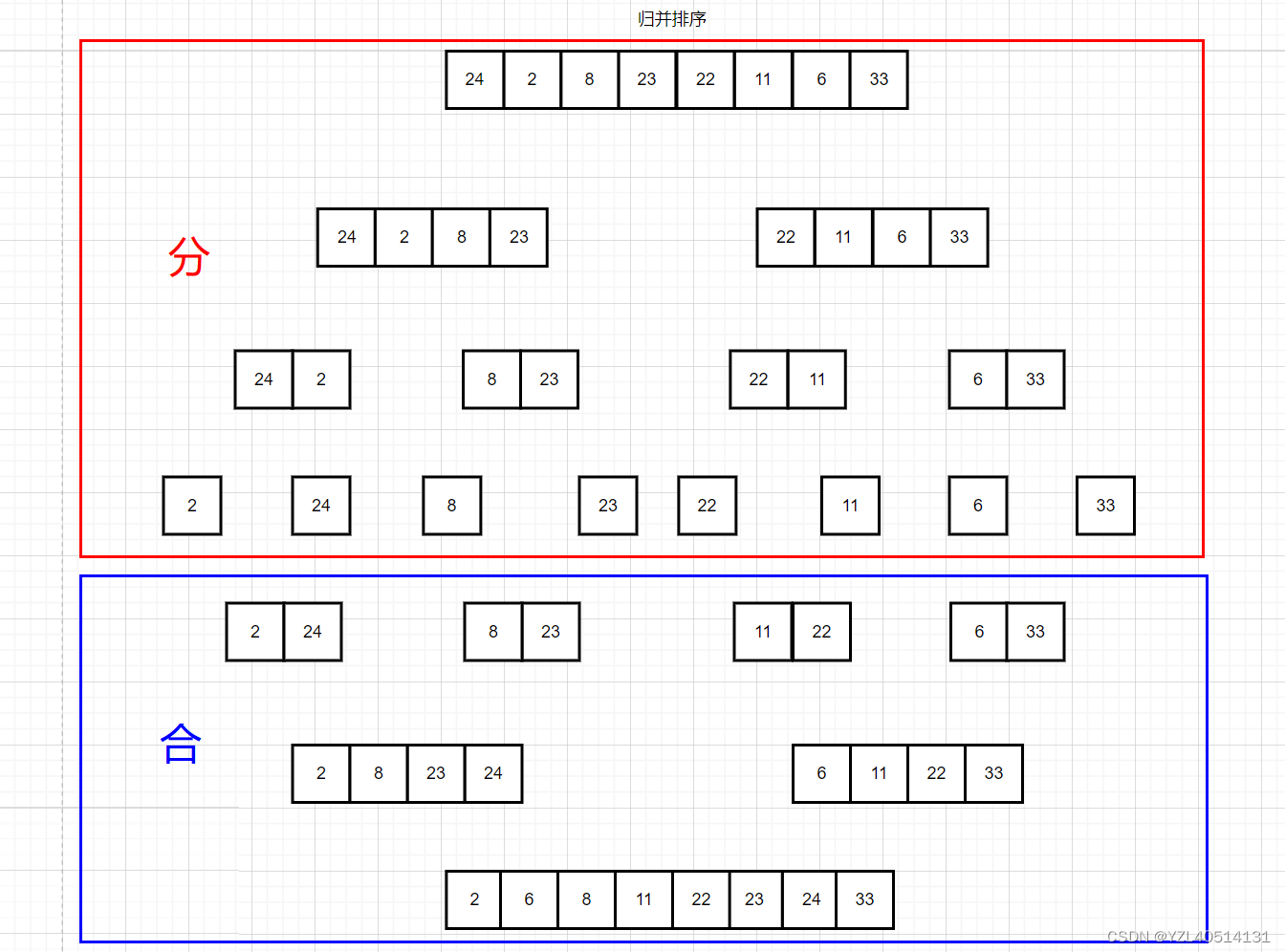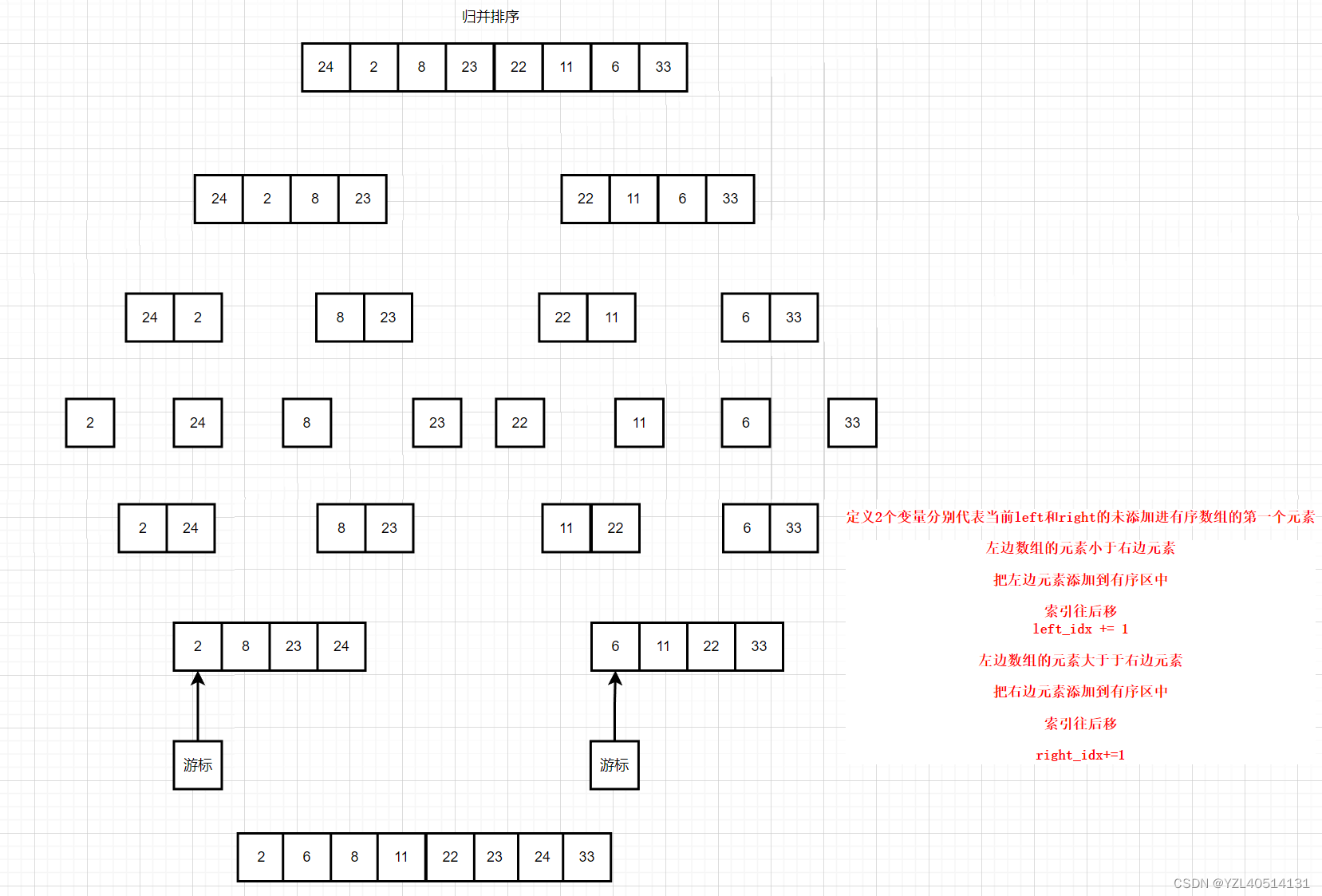执行流程图
分而治之
将数组二分,一直分到不能再分为止
自底向上有序地合并数组
图文说明

代码实现
def merge(left, right):
# 最终返回一个合并好的有序数组
# 定义2个变量分别代表当前left和right的未添加进有序数组的第一个元素
left_idx, right_idx = 0, 0
res = [] # 有序数组
while left_idx < len(left) and right_idx < len(right):
# 左边数组的元素小于右边元素
if left[left_idx] <= right[right_idx]:
# 把左边元素添加到有序区中
res.append(left[left_idx])
# 索引往后移
left_idx += 1
else:
# 把右边元素添加到有序区中
res.append(right[right_idx])
# 索引往后移
right_idx += 1
res += right[right_idx:] # 把剩余未添加的元素全部添加到有序数组哦后面
res += left[left_idx:] # 为什么可以直接添加?因为left和right本身就是一个有序的数组
# 如果left_idx走完了,right还剩一些元素,说明right里的剩下的元素全部有序数组的最后一个元素大
return res
def mergeSort(nums):
# 分
# 数组不能再分了
if len(nums) <= 1:
return nums
mid = len(nums) // 2 # 求出数组的中间位置
print(nums[:mid], nums[mid:])
left = mergeSort(nums[:mid]) # 左边的数组
right = mergeSort(nums[mid:]) # 右边的数组
# 合
return merge(left, right)
test = [9, 3, 1, 2, 7, 5, 11, 22, 23, 24, 35, 55]
test = mergeSort(test)
print(test)
执行结果
[9, 3, 1, 2, 7, 5] [11, 22, 23, 24, 35, 55]
[9, 3, 1] [2, 7, 5]
[9] [3, 1]
[3] [1]
[2] [7, 5]
[7] [5]
[11, 22, 23] [24, 35, 55]
[11] [22, 23]
[22] [23]
[24] [35, 55]
[35] [55]
[1, 2, 3, 5, 7, 9, 11, 22, 23, 24, 35, 55]
Process finished with exit code 0
时间复杂度 O(nlogn)
稳定性:稳定

